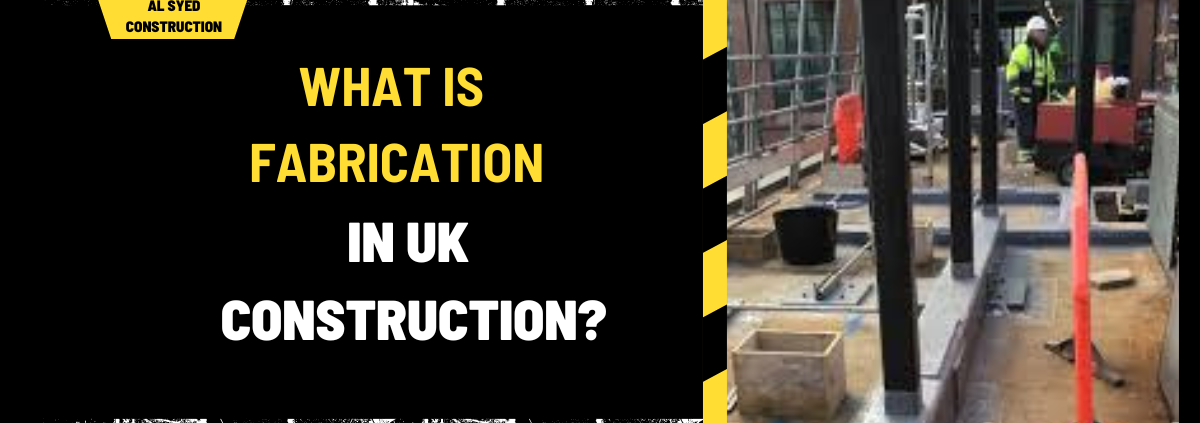What is Fabrication in UK Construction?
Fabrication in construction is a critical process involving the creation of structural components and assemblies used in building projects. This article provides an in-depth look at fabrication, detailing its significance, processes, and benefits in the construction industry.
Table of Contents
Understanding Fabrication in Construction
Fabrication refers to the process of manufacturing and assembling components and systems that are used in construction projects. This can include everything from metal beams and columns to pre-cast concrete elements and custom-made architectural features. Fabrication plays a pivotal role in ensuring that construction projects meet design specifications, quality standards, and project timelines.
Core Aspects of Fabrication
- Material Selection: Choosing the appropriate materials, such as steel, aluminum, or concrete, based on project requirements.
- Design and Engineering: Developing detailed designs and engineering plans to ensure components meet structural and aesthetic needs.
- Manufacturing and Assembly: Producing and assembling components according to specifications and quality standards.
Fabrication Processes in Construction
Fabrication encompasses several processes that transform raw materials into finished construction components. These processes are designed to ensure precision, durability, and efficiency.
1. Material Preparation
Material preparation involves selecting and preparing raw materials for the fabrication process.
- Material Selection: Choosing materials based on strength, durability, and suitability for the intended application. Common materials include steel, aluminum, concrete, and composites.
- Cutting and Shaping: Using cutting tools and machinery to shape raw materials into the required dimensions and forms.
2. Design and Engineering
Design and engineering are essential for ensuring that fabricated components meet structural and aesthetic requirements.
- CAD Software: Utilizing Computer-Aided Design (CAD) software to create detailed blueprints and models of components.
- Structural Analysis: Performing engineering analysis to ensure that components can withstand expected loads and stresses.
3. Fabrication and Assembly
Fabrication and assembly involve manufacturing and assembling the components according to design specifications.
- Welding and Joining: Using welding techniques to join metal parts, or adhesive bonding for other materials. Techniques include MIG welding, TIG welding, and arc welding.
- Pre-Fabrication: Manufacturing components in a factory setting before transporting them to the construction site for assembly.
4. Quality Control and Testing
Quality control and testing ensure that fabricated components meet industry standards and project specifications.
- Inspection: Conducting visual and dimensional inspections to verify that components meet quality standards.
- Testing: Performing tests such as load testing, stress testing, and non-destructive testing (NDT) to ensure component integrity.
Benefits of Fabrication in Construction
Fabrication offers numerous benefits that enhance the efficiency, quality, and cost-effectiveness of construction projects.
1. Improved Precision and Quality
Fabrication allows for precise manufacturing of components, leading to improved overall quality.
- Precision Engineering: Factory-controlled environments enable high precision in manufacturing, reducing errors and ensuring components fit perfectly.
- Consistent Quality: Standardized processes and quality checks ensure that each component meets the required specifications.
2. Increased Efficiency
Fabrication enhances efficiency by streamlining the construction process and reducing on-site work.
- Reduced On-Site Construction Time: Pre-fabricated components can be quickly assembled on-site, reducing overall construction time.
- Less Waste: Controlled fabrication environments minimize material waste compared to traditional on-site construction methods.
3. Cost Savings
Fabrication can lead to significant cost savings through various mechanisms.
- Economies of Scale: Bulk production of components in a factory setting can reduce costs per unit.
- Reduced Labor Costs: Fewer on-site labor requirements and reduced construction time contribute to overall cost savings.
Applications of Fabrication in Construction
Fabrication is applied across various aspects of construction, from structural elements to architectural features.
1. Structural Fabrication
Structural fabrication involves the creation of key structural components used in buildings and infrastructure.
- Steel Beams and Columns: Fabricating steel components that provide support and stability to structures.
- Pre-Cast Concrete: Manufacturing concrete elements such as walls, floors, and columns in a factory setting.
2. Architectural Fabrication
Architectural fabrication focuses on creating custom-designed elements that enhance the aesthetic appeal of buildings.
- Custom Facades: Designing and fabricating unique exterior finishes and cladding systems.
- Decorative Elements: Producing custom architectural features such as sculptures, railings, and intricate designs.
3. Mechanical and Electrical Fabrication
Mechanical and electrical fabrication involves the creation of components for building systems and infrastructure.
- HVAC Systems: Fabricating components for heating, ventilation, and air conditioning systems.
- Piping and Ductwork: Manufacturing pipes, ducts, and other components for plumbing and electrical systems.
Challenges in Fabrication
Despite its advantages, fabrication in construction faces several challenges that must be addressed to ensure success.
1. Coordination with Design
Coordination with design is crucial for ensuring that fabricated components align with architectural and engineering plans.
- Design Changes: Managing changes to design plans and ensuring that modifications are accurately reflected in fabricated components.
- Integration: Ensuring that fabricated components integrate seamlessly with other elements of the construction project.
2. Logistics and Transportation
Logistics and transportation involve managing the movement of fabricated components from the factory to the construction site.
- Handling and Transport: Ensuring that components are safely transported and handled to prevent damage.
- Site Access: Coordinating the delivery and installation of large or complex components, considering site access and space constraints.
3. Quality Assurance
Quality assurance is essential for maintaining the integrity and performance of fabricated components.
- Inspection and Testing: Conducting thorough inspections and tests to identify and address any defects or issues.
- Compliance: Ensuring that components meet industry standards and regulatory requirements.
Conclusion
Fabrication in construction is a vital process that significantly impacts the quality, efficiency, and cost of construction projects. By understanding the core aspects of fabrication, its benefits, and its applications, industry professionals can better manage and execute construction projects. Embracing fabrication techniques not only enhances project outcomes but also contributes to the overall success of the construction industry.




